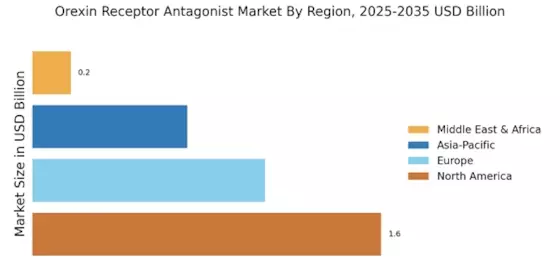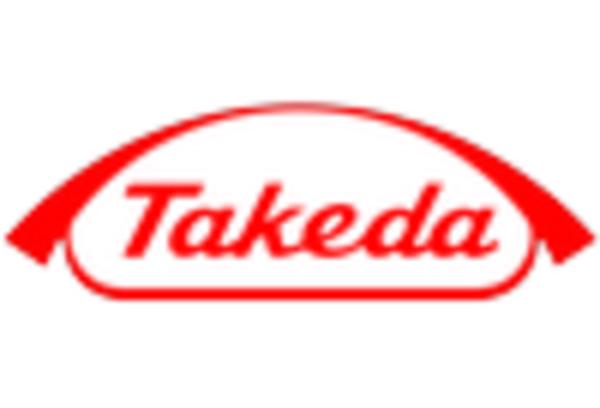Growing Geriatric Population
The growing geriatric population is a significant factor contributing to the expansion of the Orexin Receptor Antagonist Market. Older adults are more susceptible to sleep disorders due to various physiological changes and comorbidities. As the global population ages, the prevalence of insomnia and other sleep-related issues is expected to rise, creating a larger patient base for orexin receptor antagonists. This demographic shift presents a substantial opportunity for market players to develop targeted therapies that cater to the unique needs of elderly patients. The increasing focus on improving sleep quality among older adults is likely to drive demand for these medications.
Rising Investment in Sleep Research
Rising investment in sleep research is emerging as a pivotal driver for the Orexin Receptor Antagonist Market. Increased funding from both public and private sectors is facilitating the exploration of the underlying mechanisms of sleep disorders and the development of novel therapeutic agents. This influx of investment is likely to accelerate the discovery of new orexin receptor antagonists, thereby expanding the treatment options available to patients. Furthermore, collaborative efforts between academic institutions and pharmaceutical companies are fostering innovation in this field. As research continues to unveil the complexities of sleep regulation, the Orexin Receptor Antagonist Market stands to benefit from a more informed understanding of sleep disorders.
Increasing Awareness of Sleep Disorders
The rising awareness of sleep disorders among the general population is a key driver for the Orexin Receptor Antagonist Market. As more individuals recognize the impact of conditions such as insomnia and narcolepsy on their quality of life, there is a growing demand for effective treatment options. This heightened awareness is likely to lead to increased consultations with healthcare professionals, thereby driving the need for orexin receptor antagonists. According to recent estimates, sleep disorders affect approximately 30% of adults, which underscores the potential market size for these medications. The Orexin Receptor Antagonist Market is poised to benefit from this trend as patients seek innovative solutions to manage their sleep-related issues.
Regulatory Support for New Drug Approvals
Regulatory support for the approval of new drugs is a crucial driver for the Orexin Receptor Antagonist Market. Regulatory agencies are increasingly recognizing the need for effective treatments for sleep disorders, which has led to streamlined approval processes for innovative therapies. This supportive environment encourages pharmaceutical companies to invest in the development of orexin receptor antagonists. Recent approvals of novel compounds in this category have demonstrated the potential for market expansion. As more products enter the market, competition is likely to increase, which may lead to more affordable options for patients and greater accessibility to these treatments.
Technological Advancements in Drug Formulation
Technological advancements in drug formulation and delivery systems are significantly influencing the Orexin Receptor Antagonist Market. Innovations such as nanotechnology and targeted drug delivery are enhancing the efficacy and safety profiles of orexin receptor antagonists. These advancements not only improve patient compliance but also expand the therapeutic applications of these drugs. For instance, the development of long-acting formulations may reduce the frequency of dosing, which is particularly appealing to patients with chronic sleep disorders. The market is projected to grow as pharmaceutical companies invest in research and development to leverage these technologies, potentially leading to a more robust pipeline of orexin receptor antagonists.


















Leave a Comment